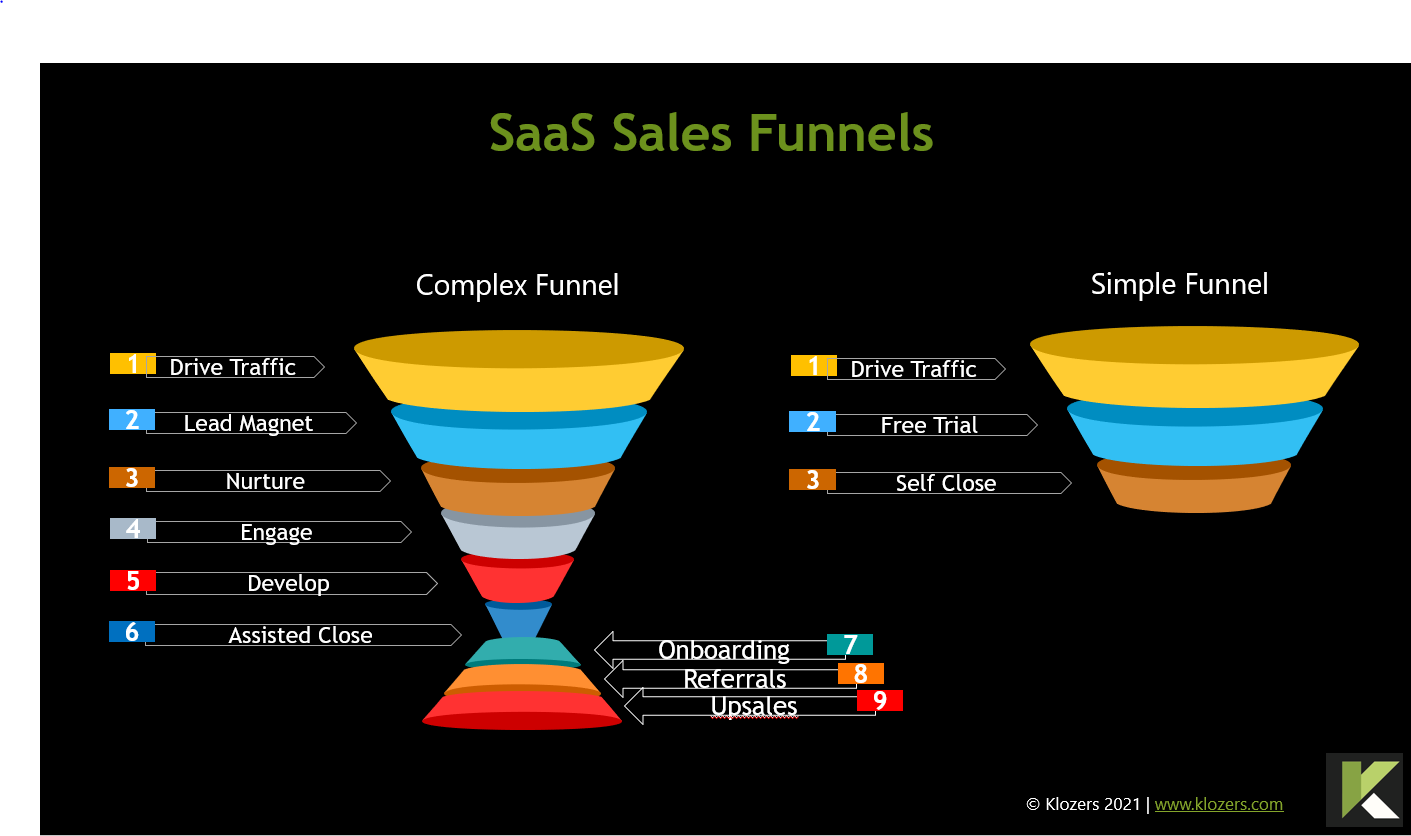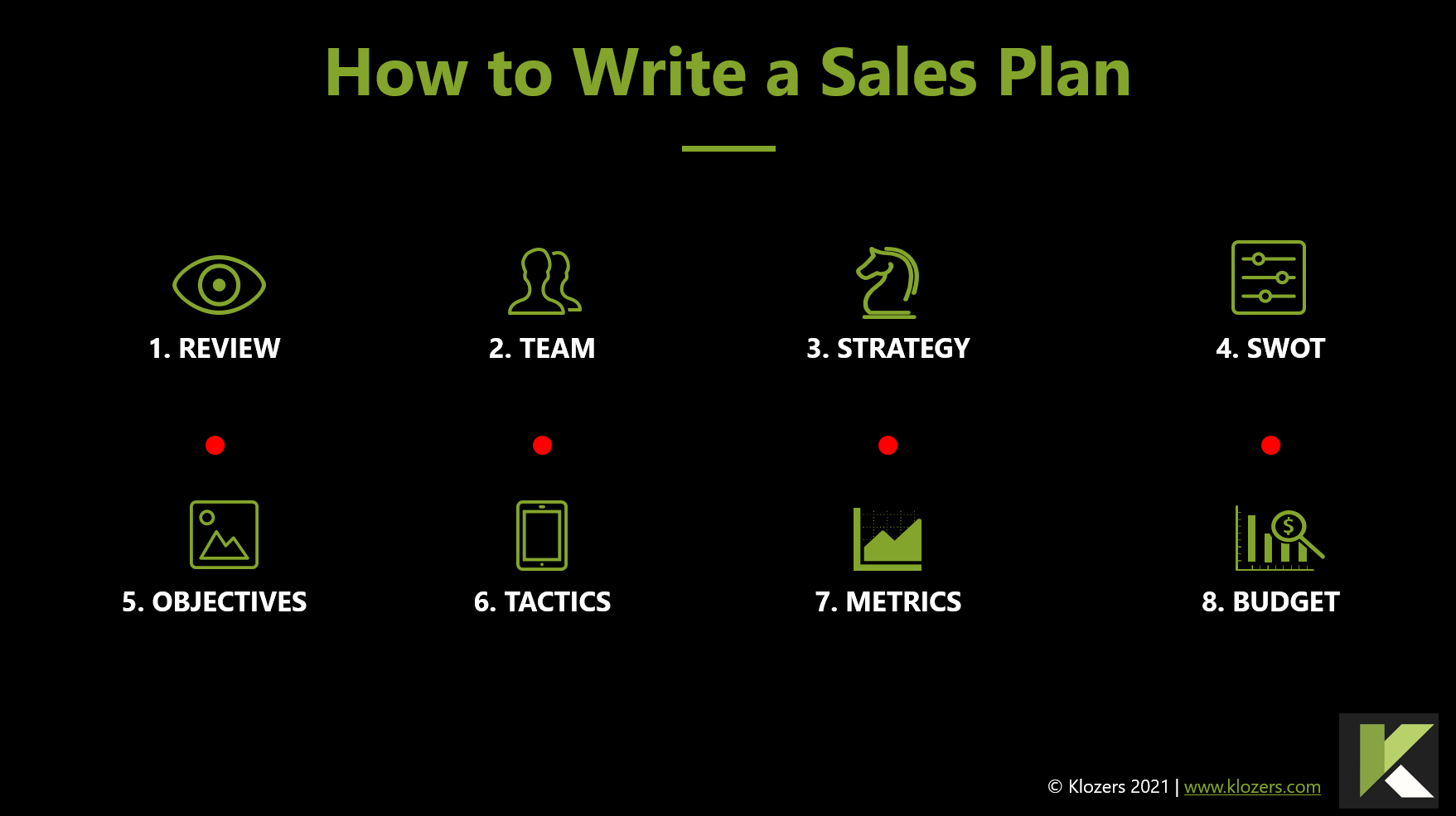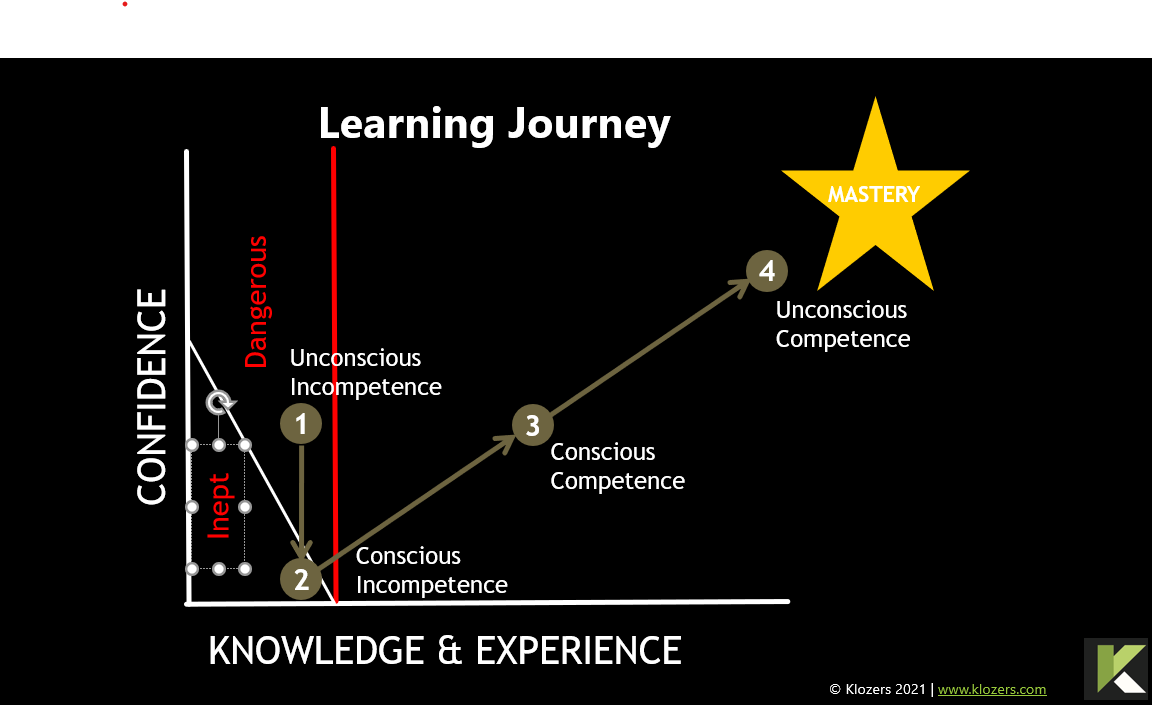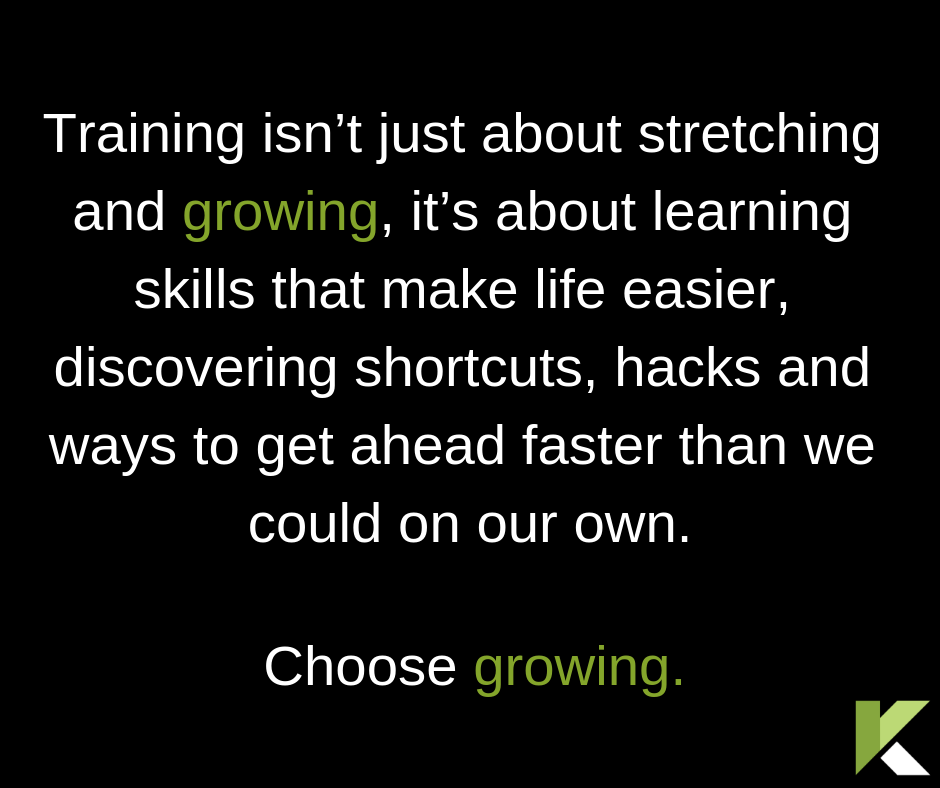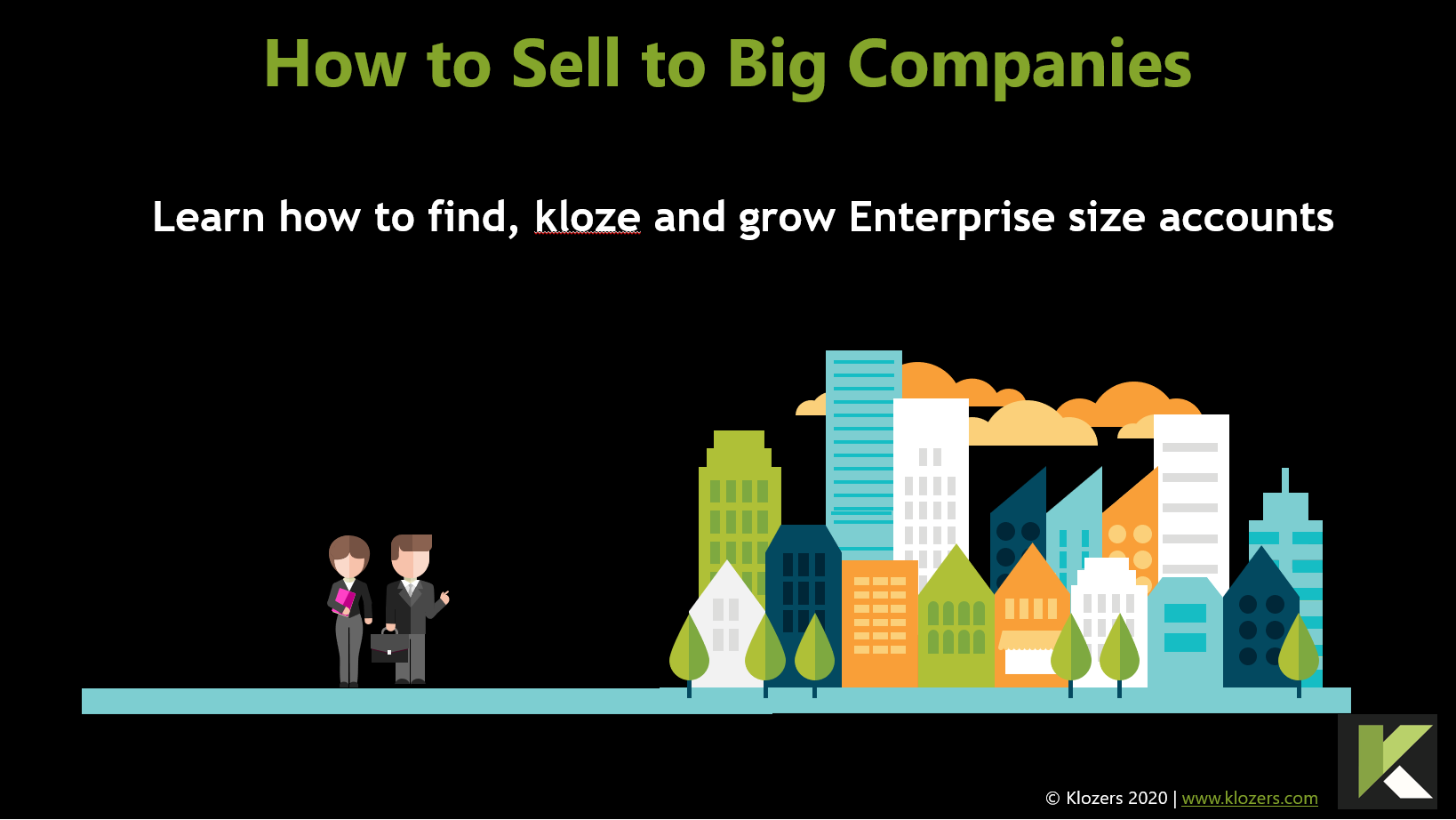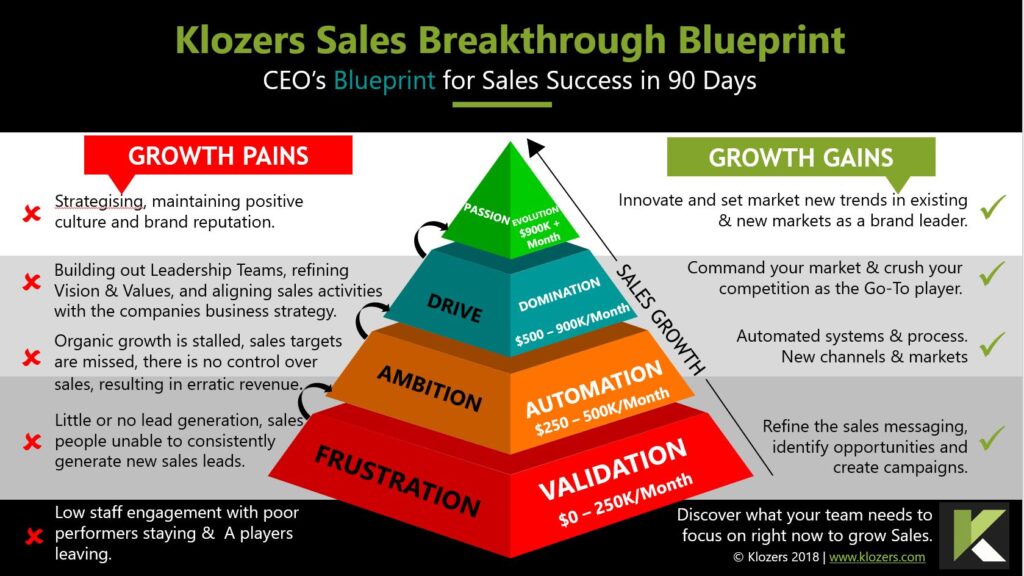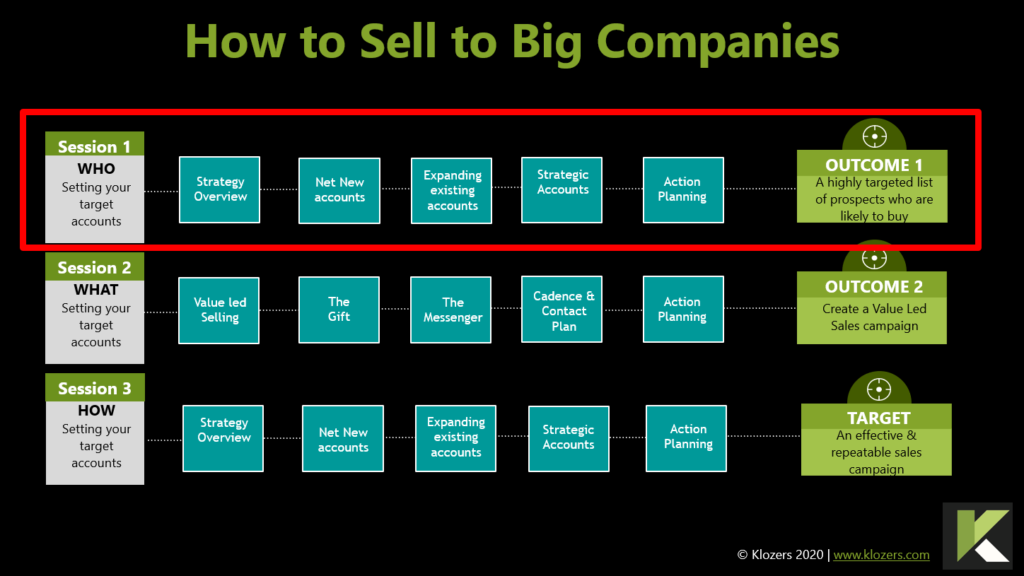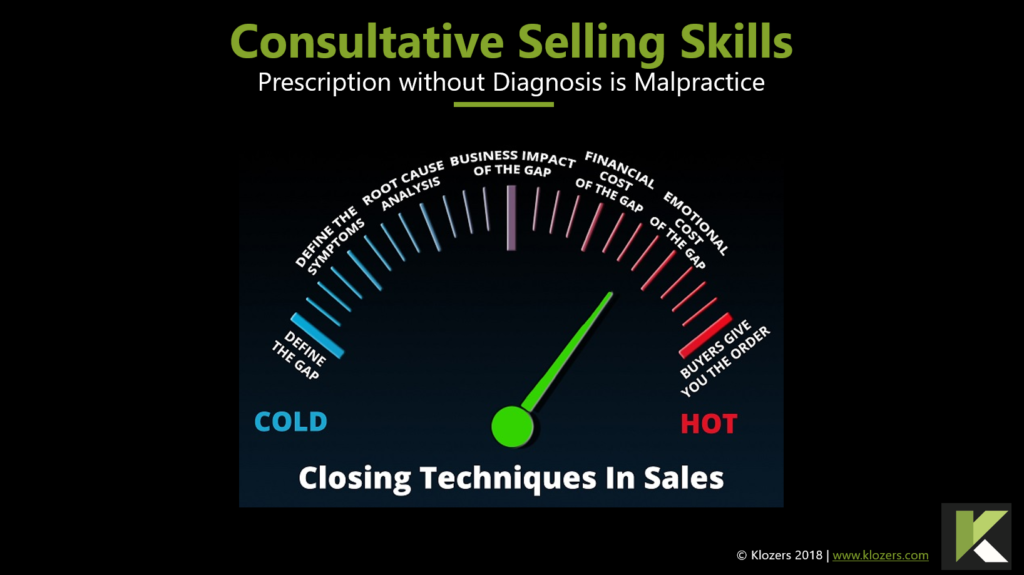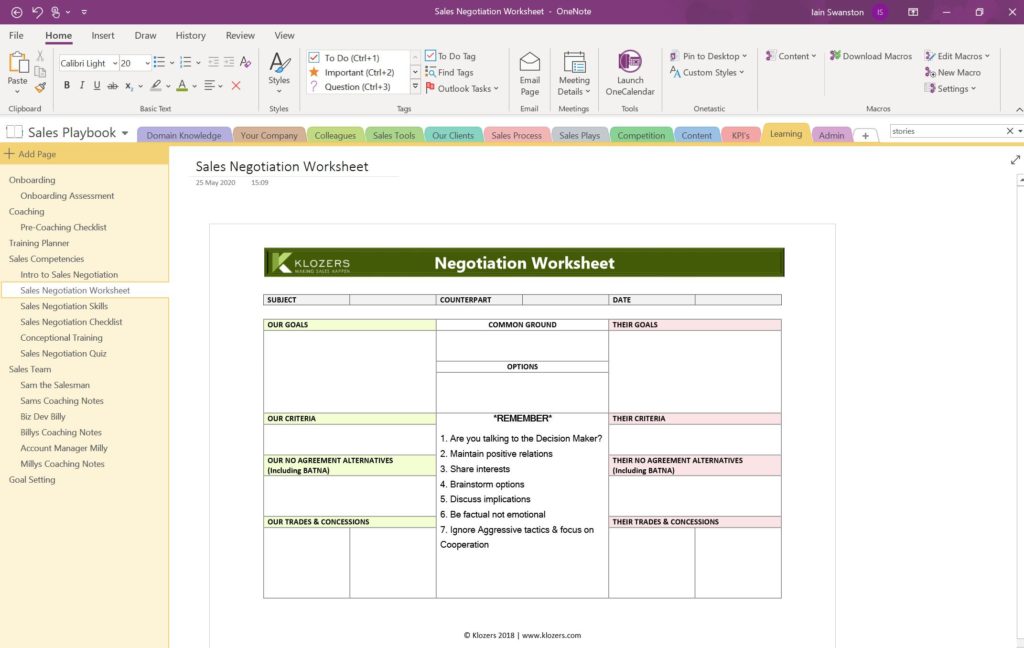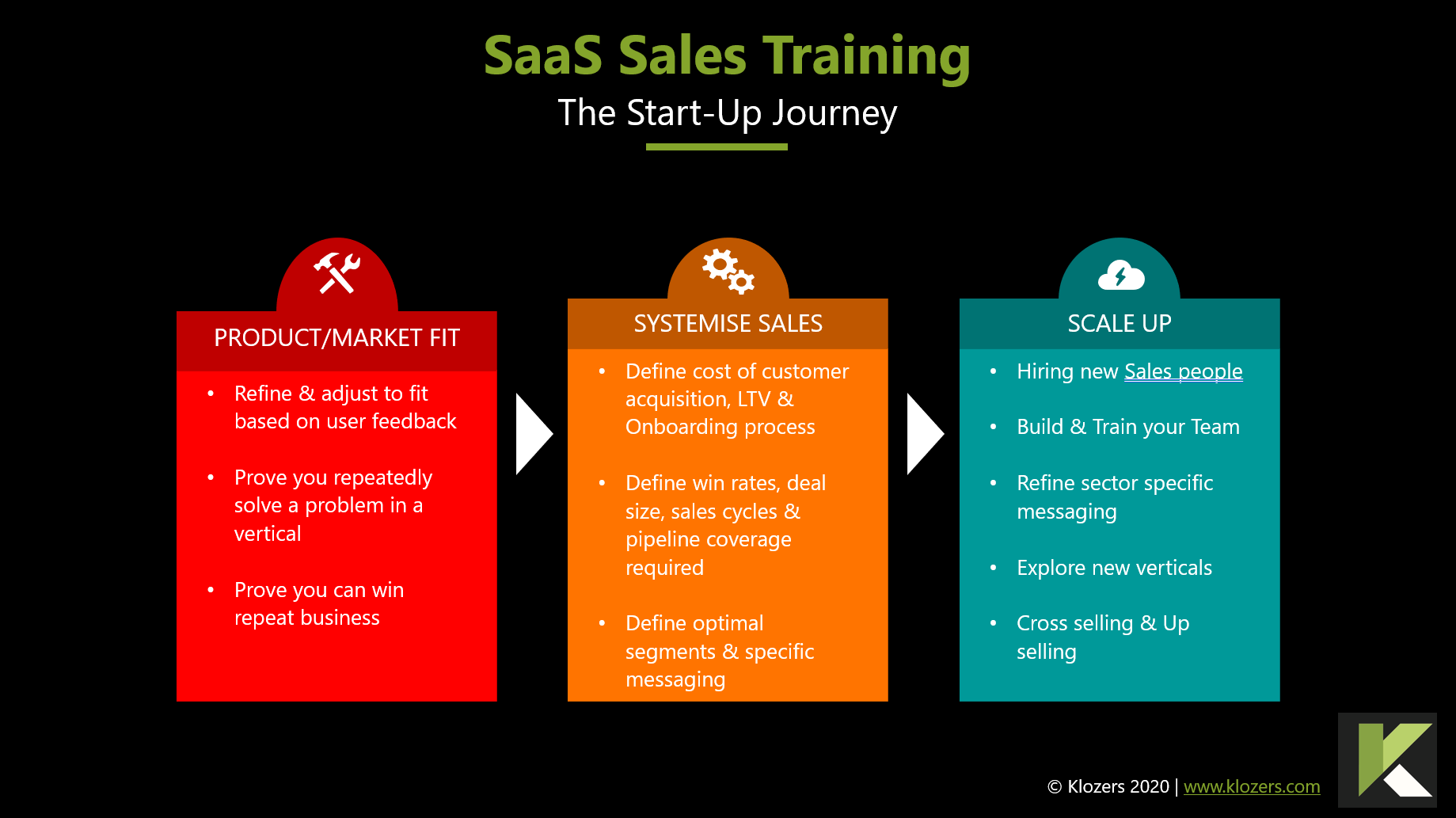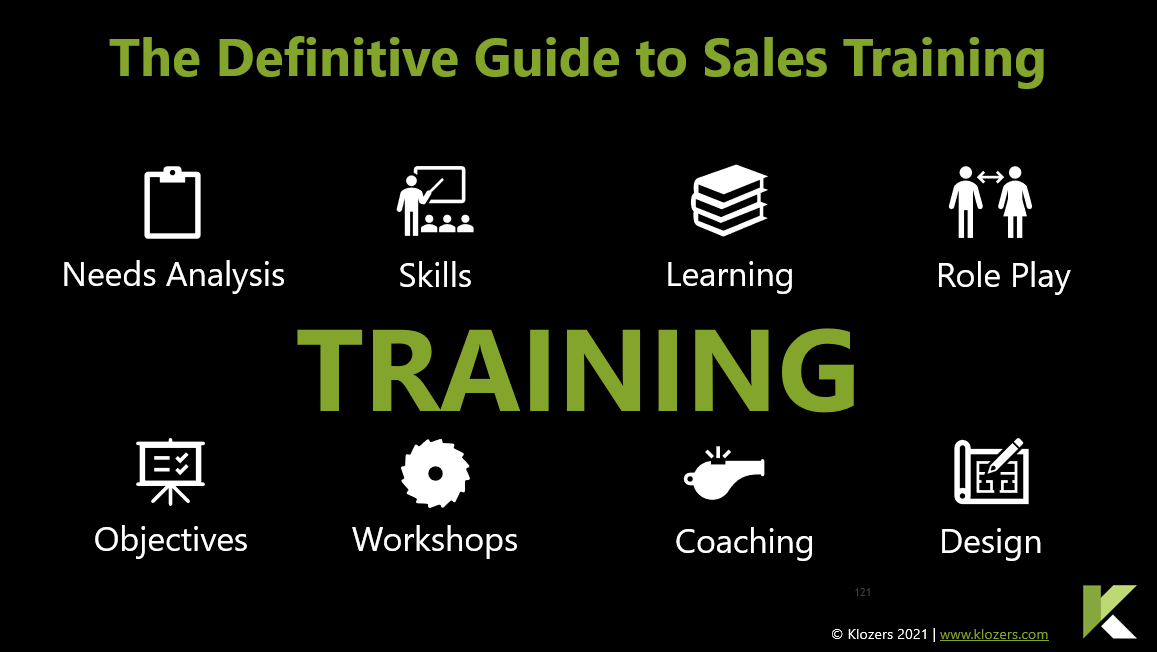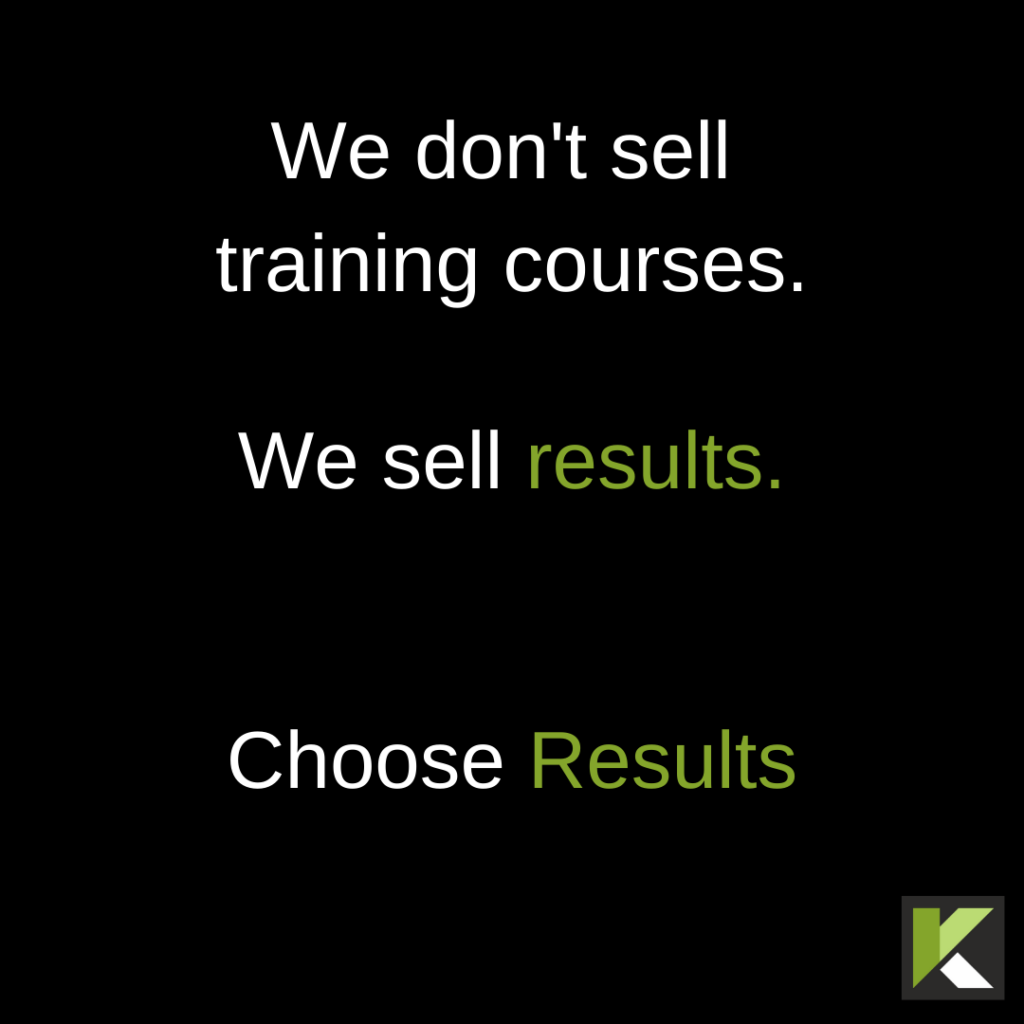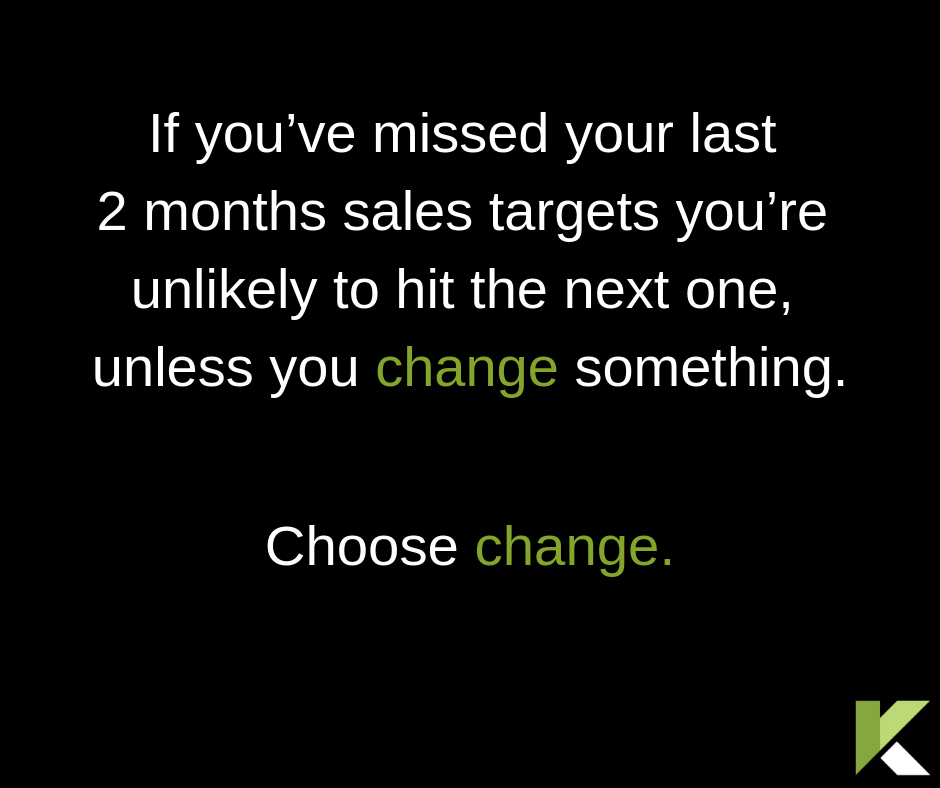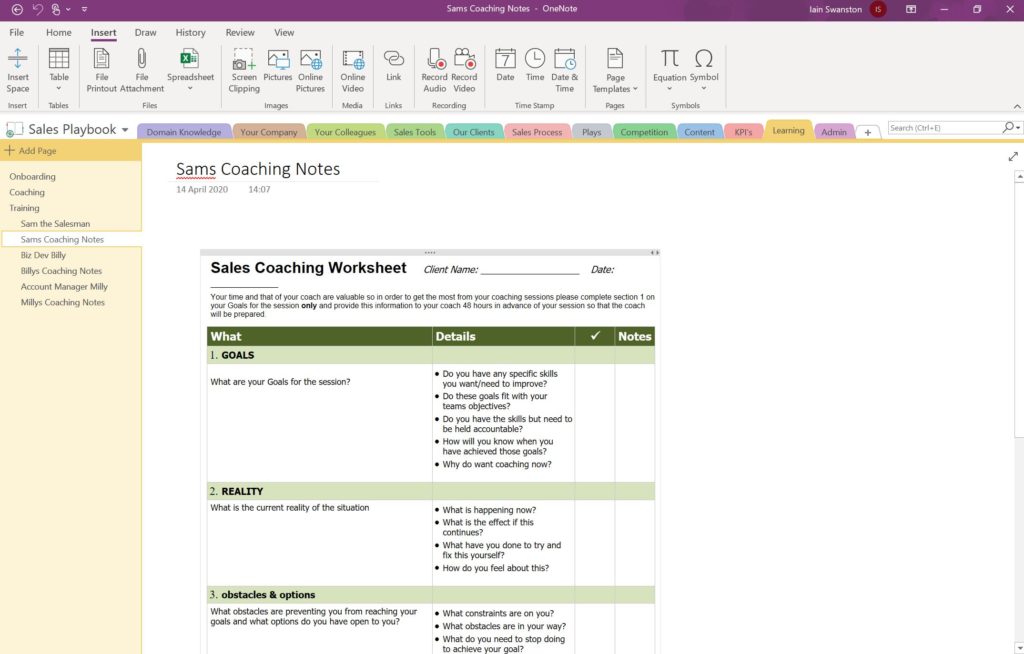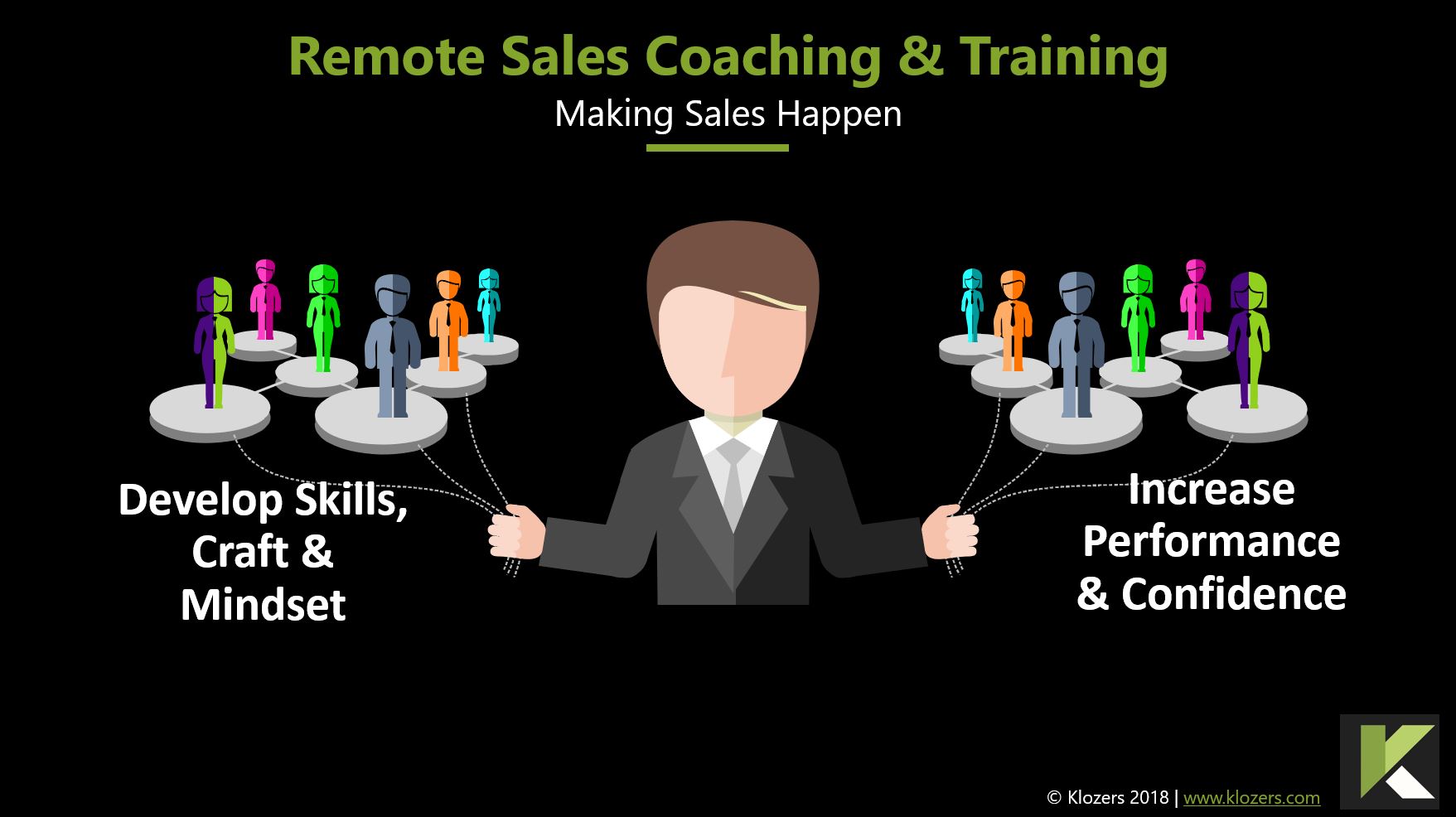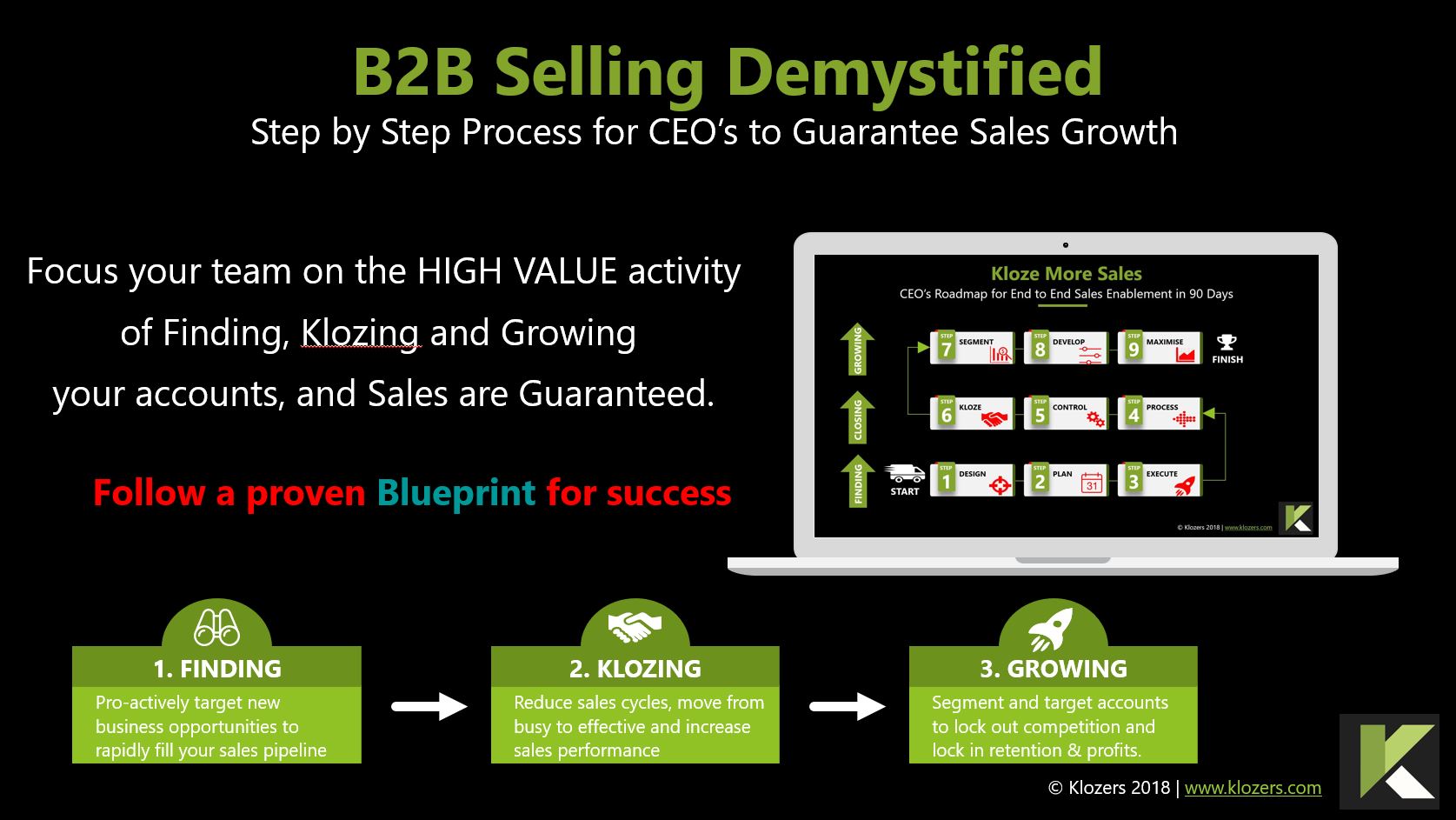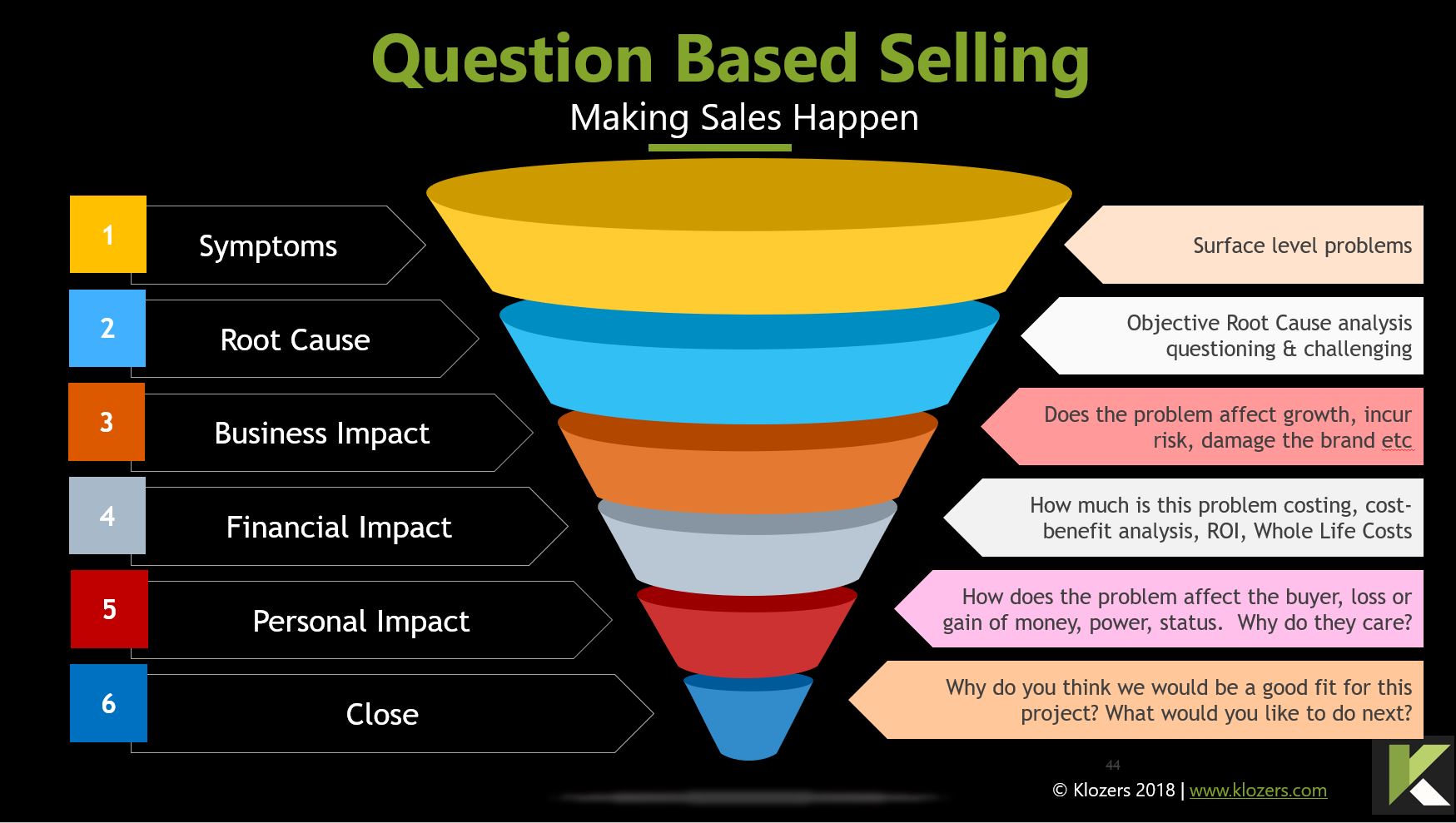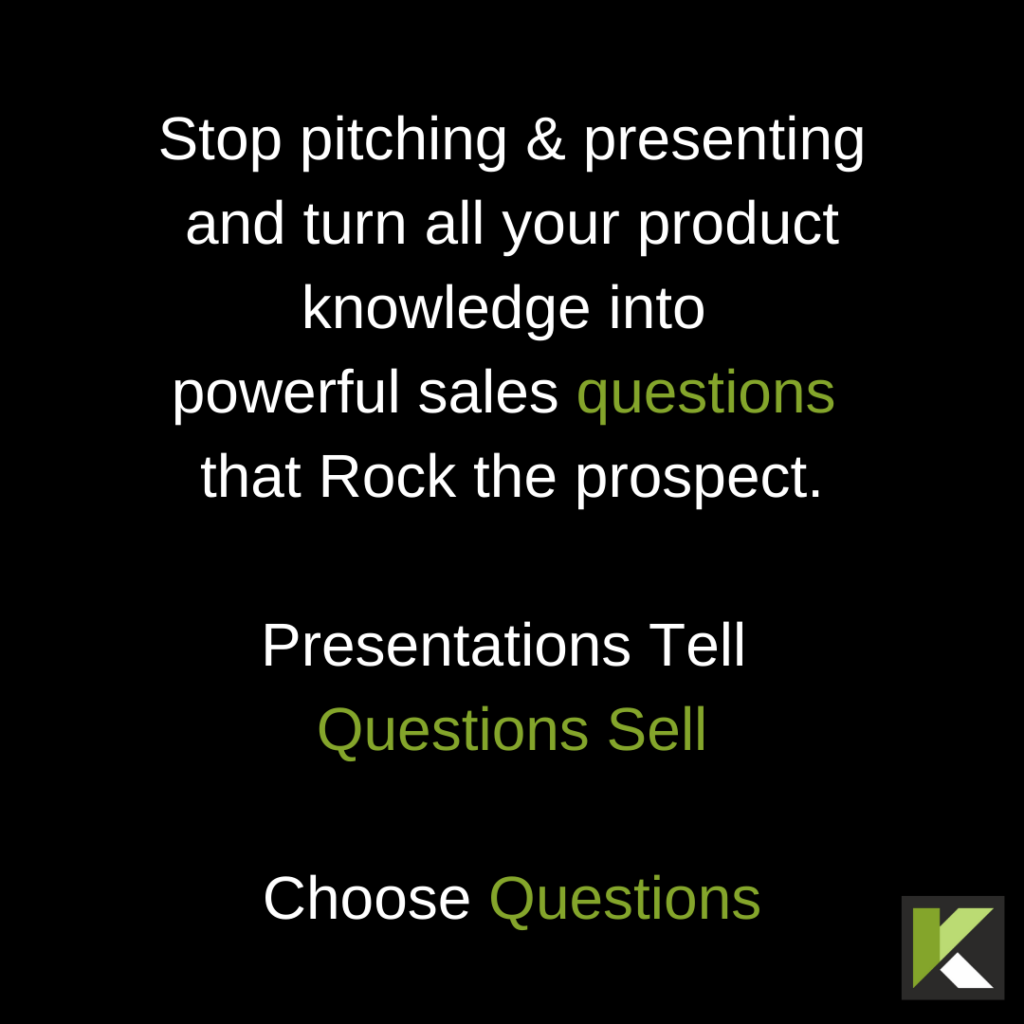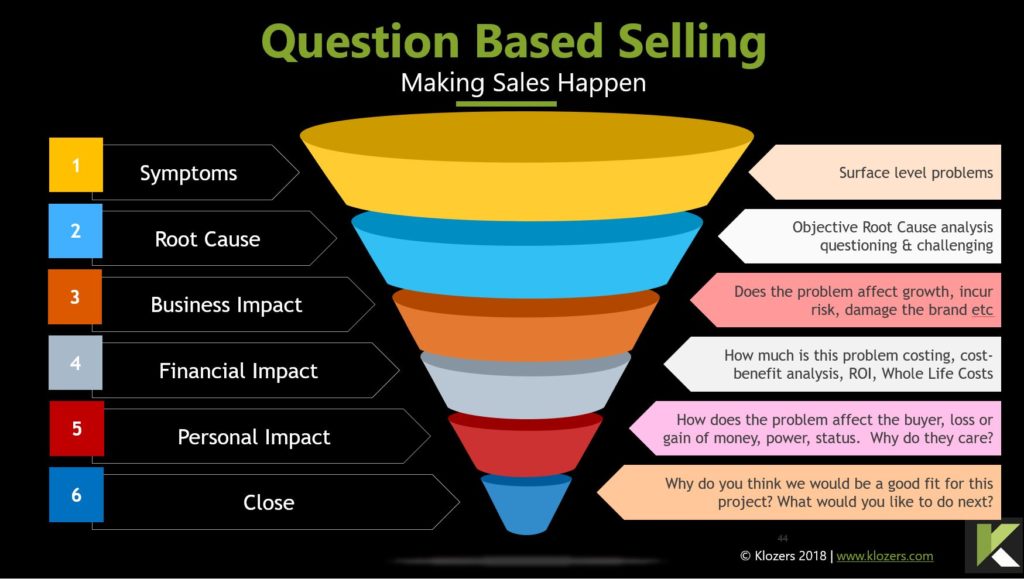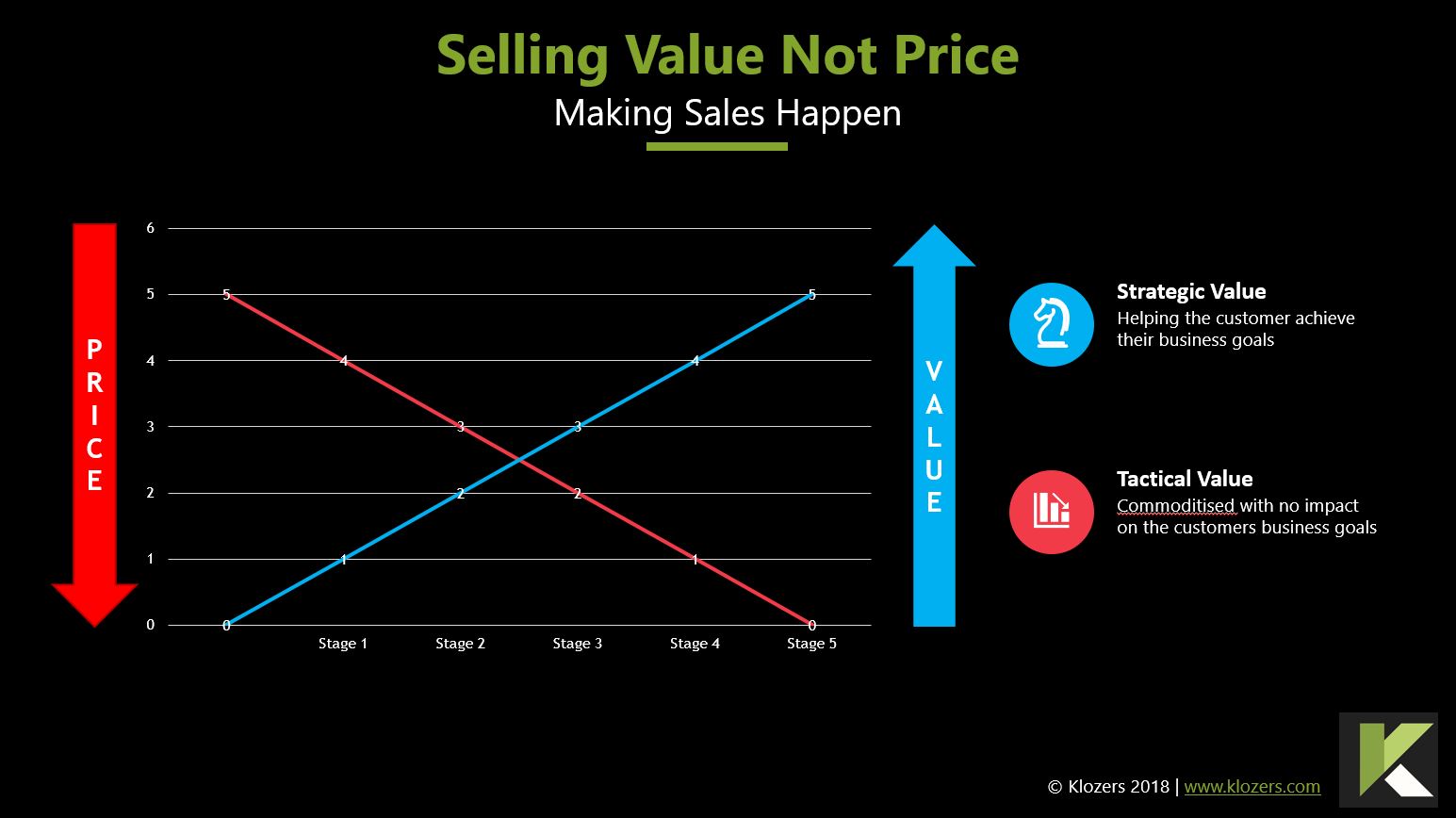1. Was ist ein Verkaufstrichter?
Ein Verkaufstrichter ist eine Abfolge von Aktionen, Ereignissen oder Phasen, die ein Nutzer durchläuft, bevor er ein Produkt oder eine Dienstleistung kauft. Mit Hilfe von Verkaufstrichtern können Marketingexperten den Verkaufsprozess verfolgen, aufzeichnen und optimieren, um die Ergebnisse zu verbessern.
Mehr über unsere SaaS-Vertriebsschulungen erfahren Sie hier.
2. Wie man einen SaaS-Verkaufstrichter aufbaut
Ihr SaaS-Verkaufstrichter ist ein wesentlicher Bestandteil des Erfolgs Ihrer Apps. Wenn Sie SaaS-Anwendungen anbieten, ist die Erstellung eines wiederholbaren, skalierbaren und nachvollziehbaren Verkaufstrichters einer der wichtigsten Schritte, die Sie unternehmen müssen.
Klingt einfach? Dann denken Sie noch einmal nach. Der Verkaufstrichter ist der Punkt, an dem viele Start-ups, die in die Umsatzgenerierung einsteigen, Schwierigkeiten haben und in vielen Fällen scheitern.
Bevor Sie mit dem Aufbau Ihres Trichters beginnen, sollten Sie sich zunächst überlegen, wo Sie sich in Ihrer App-Reise befinden.
3. Die drei Hauptphasen der SaaS-Entwicklung
Leider gibt es im Vertrieb nie eine Einheitslösung, und der Ausgangspunkt für den Aufbau eines SaaS-Verkaufstrichters hängt davon ab, wo Sie sich in Bezug auf die drei Hauptphasen eines SaaS-Geschäfts befinden?
Sind Sie bei:
Phase 1: der Beginn der Reise, in der der Gründer und das Hauptteam noch versuchen, die Passung zwischen Produkt und Markt herzustellen.
Phase 2: Der Gründer und die wichtigsten Teammitglieder haben bewiesen, dass ihr Produkt zum Markt passt, und sie haben bewiesen, dass sie Systeme und Prozesse implementieren können, die andere zum Verkauf nutzen können.
Phase 3, die letzte Hürde, in der Sie bewiesen haben, dass Ihr Produkt zum Markt passt, in der Sie die richtigen Systeme und Prozesse für die Skalierung identifiziert und erprobt haben und in der Sie nun bereit sind, Ihren Vertrieb zu skalieren, sich auf die Kundenakquise zu konzentrieren und Ihre MRR aufzubauen.
Die Strategien, die Sie für den Aufbau eines SaaS-Verkaufstrichters verwenden, hängen davon ab, was Sie in Schritt 1 oben gelernt haben.
Für die Zwecke dieser Übung gehe ich davon aus, dass Sie sich bei Schritt 1 befinden. Wenn Sie bei den Schritten 2 und 3 immer noch Schwierigkeiten haben, einen Verkaufstrichter aufzubauen, dann haben Sie entweder bei Schritt 1 etwas übersehen oder es hat sich etwas geändert, so dass alles, was Sie bei Schritt 1 gelernt haben, nicht mehr funktioniert.
4. Erstellen Sie einen Marketingtrichter vor Ihrem Verkaufstrichter
In jedem Unternehmen ist es wichtig, dass Sie Ihrem Verkaufsteam die optimalen Voraussetzungen für den Erfolg bieten. In der SaaS-Welt reicht es nicht aus, eine großartige Website zu haben, Sie brauchen eine Website, die:
a) Ihre Produkte und Dienstleistungen in den wichtigsten Suchmaschinen – Google, Bing, Yahoo und YouTube – gefunden werden können
b) durch die von Ihnen gelösten Probleme in den großen Suchmaschinen – Google, Bing, Yahoo & YouTube – gefunden werden können
c) den Webverkehr in marketingqualifizierte Leads umwandeln kann
Viele Unternehmen ignorieren dies und bauen in aller Eile ein Outbound-Verkaufsteam auf. Tatsache ist, dass jeder potenzielle Interessent, den Ihr Outbound-Team anspricht, anschließend auf Ihre Website geht, um weitere Nachforschungen anzustellen.
Wenn die Web-Erfahrung nicht gleich oder besser ist als die Erfahrung, die der Interessent mit Ihrem Outbound-Team gemacht hat, wird er sich sofort abwenden.
Um einen Marketingtrichter aufzubauen, müssen Sie “überzeugende Inhalte für den ersten Nutzer” erstellen. Dies sind Inhalte, nach denen die Nutzer aktiv suchen, nicht die Inhalte, die Ihr Vertriebs- und Marketingteam pushen möchte.
Ihr SaaS-Marketingtrichter ist ein wesentlicher Bestandteil Ihrer Inbound-Vertriebsstrategie. Um dies erfolgreich zu tun, müssen Sie in jeder Phase der Buyer Journey qualitativ hochwertige Inhalte erstellen (siehe unten).
Der Inhalt sollte auf subtile Weise Ihre Markengeschichte und den Erfolg erzählen, den Sie anderen Nutzern gebracht haben . Machen Sie Ihre Early Adopters zu Helden, nicht Sie selbst.
TOFU – Oberer Teil des Trichters
Der erste Teil Ihres Verkaufstrichters, auch bekannt als TOFU, ist die Bewusstseinsstufe des Trichters. Der Interessent ist sich der Probleme bewusst, die er hat, und sucht nach Lösungen.
Ihre Website muss Inhalte enthalten, die diese Probleme ansprechen und Ihr Unternehmen als Experten in diesem Bereich positionieren. Die beliebtesten Inhalte wären hier:
Anleitungen
Erklärungsvideos
Blog-Beiträge
Blei-Magnete
In dieser Phase befindet sich der Interessent im Forschungsmodus, nicht im Kaufmodus und sammelt lediglich Informationen.
Möglicherweise ist Ihr Interessent in diesem Stadium noch gar nicht an Lösungen interessiert, da er noch versucht, seine eigenen Probleme genau zu diagnostizieren. Es ist unwahrscheinlich, dass Ihr Interessent in dieser Phase mit dem Vertrieb sprechen möchte.
Wir empfehlen Ihnen, die Marketing-Automatisierung zu nutzen, um zu verfolgen, über welche Artikel/Seiten Ihre potenziellen Kunden die Website betreten, da dies das Problem ist, das für sie am wichtigsten ist. Dies zu wissen, kann es dem Vertrieb leichter machen, ein relevantes Gespräch mit ihnen zu führen.
Sie können auch mit Chatbots auf Ihrer Website Erfolg haben, aber viele werden in dieser Phase anonym bleiben wollen.
Mitte des Trichters
In der Mitte Ihres Verkaufstrichters beginnen potenzielle Kunden, auf der Grundlage der in Stufe 1 gewonnenen Erkenntnisse spezifische Lösungen zu bewerten. Zu den Inhalten in der Mitte des Trichters gehören:
Präsentationen
Demonstrationen
Fallstudien
In der Praxis werden sie eine Art Auswahlliste potenzieller Anbieter erstellt haben und sich dann mit den Einzelheiten jeder potenziellen Lösung befassen.
In diesem Stadium ist der Interessent möglicherweise noch nicht bereit, sich auf Sie einzulassen, da er oft nur im Auftrag anderer Personen in seinem eigenen Unternehmen recherchiert und seine Priorität immer noch in der Informationsbeschaffung liegt.
Boden des Trichters
Wenn Ihr potenzieller Kunde das untere Ende Ihres Marketingtrichters erreicht hat, hat er sich in vielen Fällen bereits für einen bestimmten Anbieter oder eine bestimmte Lösung “entschieden”.
Sie haben ihre Entscheidung größtenteils auf der Grundlage ihrer Web-Erfahrung mit der Marke, Ihrer Vertriebsbotschaft und Ihrer Fähigkeit getroffen, sich nicht nur als Marktführer, sondern als Vordenker zu positionieren, der ihre Probleme versteht.
Bottom-of-Funnel-Inhalte würden Dinge beinhalten wie:
Preisgestaltung
Vergleichstabellen
Testimonials
Bewertungen
Bei einfacheren, preisgünstigeren Lösungen werden Sie feststellen, dass sie jetzt bereit sind, eine Testversion zu nutzen, wenn Sie einen starken Aufruf zum Handeln (CTA) anbieten, während sie sich bei teureren und komplexeren Lösungen jetzt auf den Verkauf einlassen werden.
Die folgende Abbildung zeigt, wie ein einfacher Marketingtrichter in einen Einkaufswagen und ein komplexerer B2B-Verkauf in einen Lead für den Vertrieb übergeht.
Der Erfolg liegt nicht in der Wahl des richtigen Modells, sondern im Aufbau eines eigenen Modells auf der Grundlage von Daten und Versuch und Irrtum.
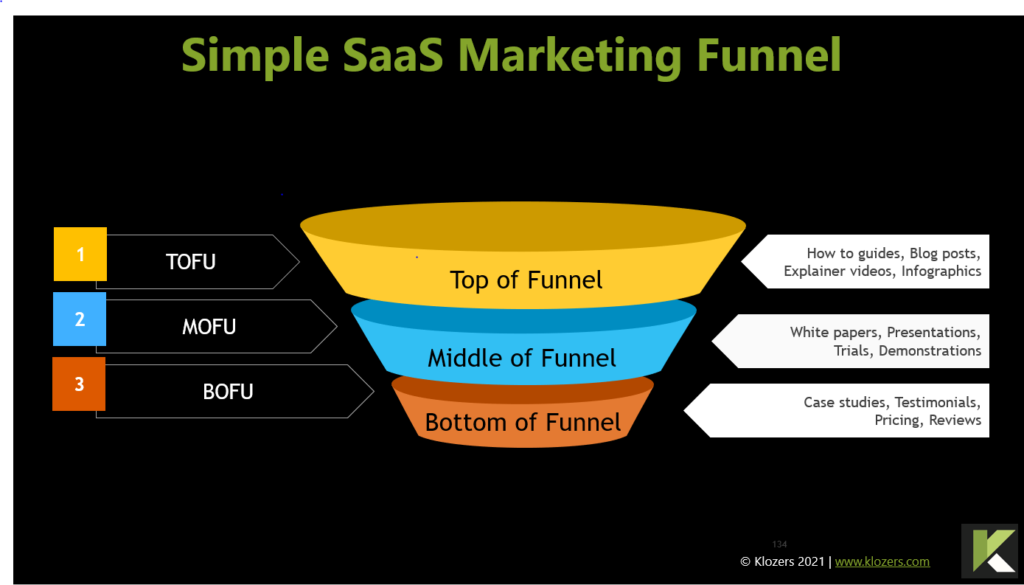
Die meisten Marketingsoftwares verfolgen inzwischen das Nutzerverhalten auf Ihrer Website und können mit Hilfe von Lead Scoring die Vertriebsmitarbeiter darauf hinweisen, wann der beste Zeitpunkt für eine proaktive Kontaktaufnahme mit potenziellen Kunden ist.
Unserer Erfahrung nach ist der Zeitpunkt fast immer zu früh, und ein gut definiertes Lead-Nurturing-Programm ist ebenso effektiv.
Um dies zu erreichen, sollten Sie in Ihr Marketing mindestens drei verschiedene Lead-Magneten einbauen, die Ihnen helfen, Ihre Web-Besucher in Abonnenten zu verwandeln, damit Sie in Kontakt bleiben können.
5. Werbung zum Füllen Ihres Verkaufstrichters
Viele Unternehmen füllen ihren Verkaufstrichter erfolgreich über Werbung. Die digitale Werbung ist inzwischen so ausgereift, dass sie ein umfangreiches Tracking und Reporting ermöglicht, so dass Sie innerhalb weniger Wochen wissen, wie hoch Ihre Conversion Ratio und Ihr CAC sein werden.
In erster Linie würden wir “Re-Targeting-Kampagnen” befürworten. Dies ist einfach der Prozess der Platzierung von Werbemitteln vor Leuten, die bereits Ihre Website besucht haben.
Studien zeigen, dass Retargeting siebenmal effektiver ist als neue Kampagnen, weshalb wir dies als Ausgangspunkt befürworten.
Diese Strategie funktioniert sehr gut mit einer starken Content-Marketing-Kampagne. Der beliebteste Add-Kanal für B2B ist LinkedIn, aber viele Unternehmen sind auch mit Facebook und Instagram gut gefahren.
Dies wird natürlich von Ihrem Publikum bestimmt. Werbung kann in einfachen Trichtern eingesetzt werden, um Verkäufe zu fördern, und in komplexeren, um neue Anfragen für Vertriebsmitarbeiter zu generieren.
Komplexere Verkäufe benötigen möglicherweise eine definierte Sequenz, bei der die Benutzer auf einen Lead-Magneten klicken und eine Anzeige schalten, um einen Lead-Magneten zu erhalten, wobei jeder Lead $3 kostet.
Wenn es Ihnen anschließend gelingt, 5 % dieser neuen Leads zu konvertieren, können Sie 60 $ pro Verkauf aus der Werbung auf Ihre CAC anrechnen.
Sie können aus jeder Aktivität, nicht nur aus der Werbung, eine nachvollziehbare Sequenz oder ein Modell erstellen. So können Sie beispielsweise anhand von Veranstaltungen, Webinaren und Telesales nachvollziehen, welche Aktivitäten am kosteneffizientesten sind, um nicht nur Ihren Trichter zu füllen, sondern auch tatsächlich zu Aufträgen zu führen.
6. Wie man einen SaaS-Verkaufstrichter aufbaut
Ihr Verkaufstrichter wird sich je nach Ihrer Verkaufsstrategie unterscheiden. Verkaufen Sie Ihre App direkt oder verkaufen Sie sie über Partner? Auf welche Kanäle haben Sie sich zunächst konzentriert?
1. Identifizieren Sie Ihr perfektes Interessentenprofil. Dies ist die Version einer Marketing-Persona für den Vertriebsmitarbeiter. Sie enthält alles, was auch eine Marketing-Persona enthalten würde, sowie einige zusätzliche Informationen, die dem Vertrieb helfen, den potenziellen Kunden besser zu verstehen und mit ihm zu kommunizieren.
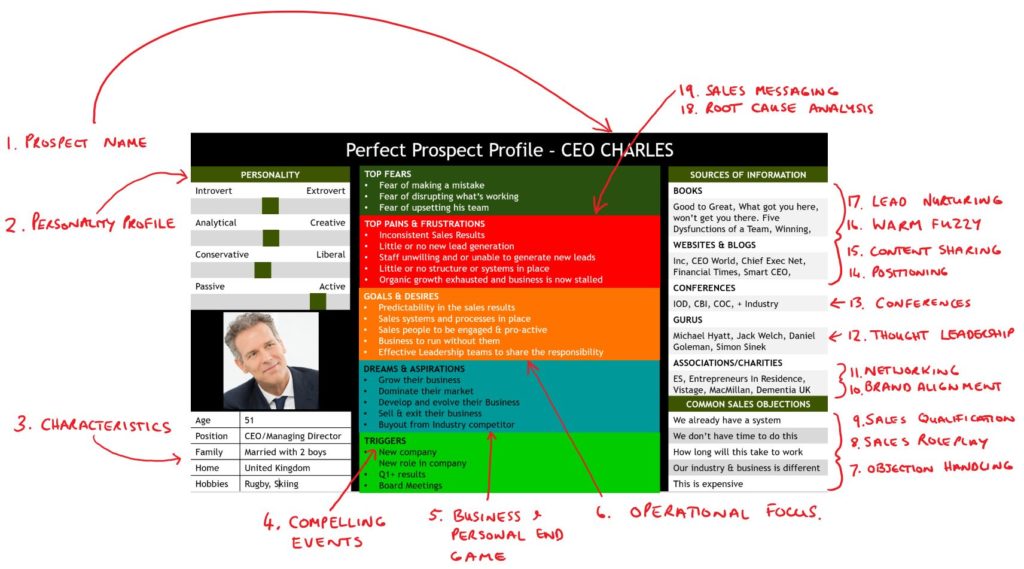
2. Erstellen Sie Ihre Vertriebsbotschaft. Ein Teil der Produkt-/Marktanpassung besteht darin zu verstehen, welches geschäftliche oder persönliche Problem Ihr Produkt löst.
Nach unserer Erfahrung sind die erfolgreichsten SaaS-Dienste Unternehmenslösungen, die Geschäftsprobleme lösen.
Wenn Sie erst einmal verstanden haben, wie dies mit Ihrem eigenen Produkt/Dienstleistung zusammenhängt, können Sie damit beginnen, Ihre Vertriebsbotschaften zu erstellen.
Es sind die Worte und die differenzierte Sprache, mit denen Sie nachweislich eine Verbindung zu potenziellen Kunden herstellen. Es reicht nicht aus, über Ihr eigenes Unternehmen und Ihre Lösungen Bescheid zu wissen, Sie sollten auch Ihre Kunden kennen.
Sie sollten genau wissen, wie Ihre Lösung Ihrem Kunden hilft, Geld zu sparen, Geld zu verdienen und ihm das Leben zu erleichtern.
3. Lead-Generierungs-Kampagne.
Sobald Sie Ihre potenziellen Kunden identifiziert und Ihre Vertriebsbotschaft erstellt haben, müssen Sie mit der Arbeit an einer Lead-Generierungskampagne beginnen.
Es gibt zwei Hauptansätze für die Lead-Generierung wie folgt:
a) Inbound-Lead-Generierung. Bei Inbound-Kampagnen zur Lead-Generierung nimmt der Interessent zuerst Kontakt mit Ihnen auf. Sie können ein Formular auf Ihrer Website ausfüllen, Sie anrufen oder Ihnen eine E-Mail schicken. Um eingehende Leads zu generieren, müssen Sie in irgendeiner Form Inhalte erstellen, Anzeigenkampagnen, Webinare, Empfehlungsprogramme oder SEO durchführen.
b) Outbound-Lead-Generierung. Outbound-Kampagnen zur Lead-Generierung sind Kampagnen, bei denen Sie potenzielle Kunden über Telefon, E-Mail, Direktwerbung, Veranstaltungen oder kontobasiertes Marketing ansprechen. Outbound-Kampagnen bedeuten immer, dass Sie ein Outbound-Team aufbauen müssen, was teuer sein kann.
Die meisten SaaS-Unternehmen nutzen eine Kombination aus Inbound- und Outbound-Kampagnen, wobei der Schwerpunkt fast immer auf einer der beiden Vorgehensweisen liegt.
Als grober Anhaltspunkt kann gelten, dass SaaS-Dienste, die kostengünstiger sind und auf KMU abzielen, marketingorientiert sind und sich vorwiegend auf Inbound konzentrieren.
SaaS-Dienste, die eher kostenintensiv sind und auf mittelständische bis große Unternehmen abzielen, verfolgen einen eher vertriebsorientierten Ansatz über Account Based Marketing.
7. Was sind die Stufen eines SaaS-Verkaufstrichters?

Die Stufen Ihres Verkaufstrichters sind einfach eine Reihe von Schritten, die Ihre Interessenten durchlaufen, um eine Bestellung aufzugeben.
Diese Phasen können sehr unterschiedlich sein, und es gibt nicht den einen Trichter, den Sie auf jede App anwenden können. Auch wenn die Phasen gleich sind, kann die Methode, mit der Sie potenzielle Kunden durch den Trichter bewegen, unterschiedlich sein.
Ihr Verkaufstrichter ist ein hervorragender Ausgangspunkt für die Erfassung von Daten, um die Leistung zu messen und im Laufe der Zeit Verbesserungen vorzunehmen.
Im Allgemeinen sollten potenzielle Kunden den Verkaufstrichter so schnell wie möglich durchlaufen – dies wird als Verkaufszyklus oder Rohrgeschwindigkeit bezeichnet.
Durch die Messung der Geschwindigkeit, mit der sich potenzielle Kunden durch den Zyklus bewegen, können Sie Blockaden in Ihrem Trichter und Bereiche, in denen potenzielle Kunden langsamer werden, identifizieren.
Diese “Knackpunkte” sind die Punkte, an denen Sie Verbesserungen vornehmen sollten.
8. Wann führe ich mein SaaS-Produkt den Kunden vor?
Das Timing von SaaS-Anwendungsdemonstrationen innerhalb des Verkaufsprozesses ist für viele Unternehmen ein Diskussionsthema.
Die Antwort auf diese Frage lautet leider “es kommt darauf an”. Viele Unternehmen führen ihre App zu Beginn des Verkaufsprozesses erfolgreich vor, aber es gibt auch viele, die ihre App zu Beginn vorführen und dann ihre potenziellen Kunden in einem schwarzen Loch aus Voicemail und unbeantworteten E-Mails verschwinden lassen.
Kurz gesagt, je billiger und einfacher die Lösung ist, desto früher im Prozess können Sie sie vorführen, und je teurer und komplexer die Lösung ist, desto weiter hinten im Verkaufsprozess sollte sie vorgeführt werden.
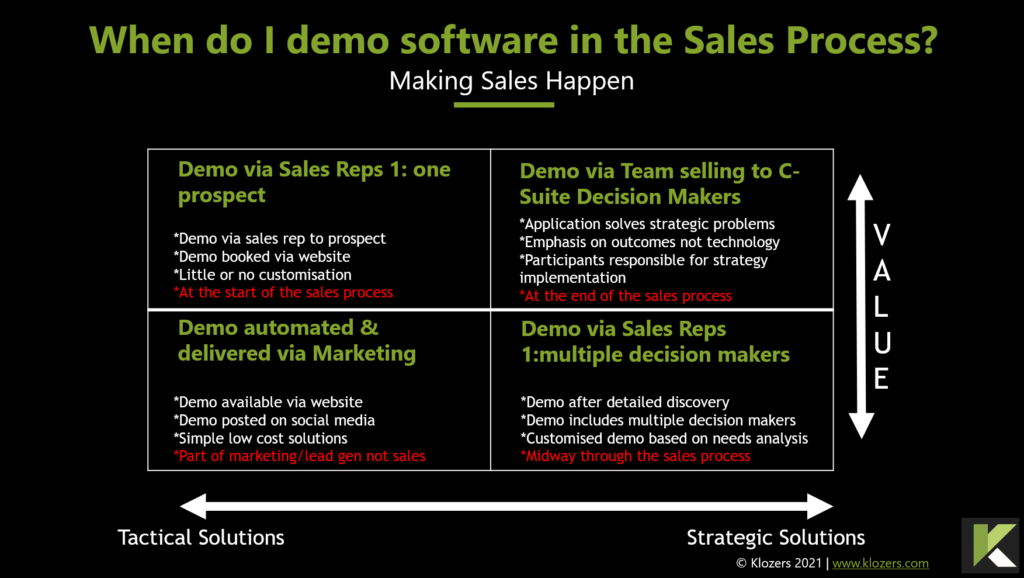
In der Realität neigen Unternehmer und Vertriebsmitarbeiter dazu, ihre App in aller Eile zu demonstrieren, in der Hoffnung, dass die Demo den potenziellen Kunden davon überzeugt, sich zu registrieren.
Selbst wenn der Interessent qualifiziert ist und gut zu uns passt, besteht bei einer Demo ohne irgendeine Form der Diagnose des Schmerzes des Interessenten die Gefahr, dass der Interessent verloren geht.
Ihr Interessent muss wissen, dass Sie seine Welt kennen und verstehen. Dies kann nur durch intelligente und gezielte Befragung erreicht werden. Wenn Sie den Verkauf beschleunigen wollen, verlangsamen Sie den Verkauf.
Die Demo ist in der Regel der größte Hebel des Verkäufers, und wenn Sie sie zu schnell verschenken, verlieren Sie den Hebel und höchstwahrscheinlich auch den Interessenten.
Als Faustregel gilt: Schieben Sie die App-Demo in Ihrem Verkaufsprozess so weit wie möglich nach hinten.
Demos kosten Zeit und Geld, insbesondere bei komplexen Verkäufen, bei denen häufig eine maßgeschneiderte Demo erforderlich ist.
Jede maßgeschneiderte Demonstration darf nur den leitenden Entscheidungsträgern im Einkaufsteam des Interessenten vorgelegt werden. Gegebenenfalls können Sie sogar zwei Demos innerhalb des Verkaufsprozesses durchführen – es gibt keine anderen Regeln als die, dass Sie es tun, wenn es funktioniert.
Die meisten Vertriebsmitarbeiter machen den Fehler, diesen Teil des Verkaufsprozesses zu nutzen, um die Vorteile des Produkts im Detail zu erläutern.
Wenn du erzählst, verkaufst du nicht. Verwenden Sie intelligente Fragen, um den Interessenten dazu zu bringen, Ihnen mitzuteilen, wie die Lösung seine geschäftlichen Probleme lösen wird.
Sie sollten es vermeiden, über Merkmale zu sprechen, von denen Sie glauben, dass sie für sie relevant sind. Wenn Sie dies in der Entdeckungsphase des Verkaufsprozesses nicht aufgedeckt haben, ist es von Natur aus riskant, im weiteren Verlauf des Prozesses etwas Neues einzuführen.
Bei einfacheren, preisgünstigeren Lösungen sind sie nun bereit, eine Testversion zu nutzen, während sie bei teureren und komplexeren Lösungen nun mit einem Vertriebsmitarbeiter sprechen werden.
Um nachzuweisen, dass sie ihre Sorgfaltspflicht erfüllt haben, werden sie immer mit zwei oder drei potenziellen Lieferanten sprechen.
Dabei geht es nicht unbedingt darum, einen Lieferanten über den Preis zu schlagen, aber manchmal müssen sie der breiteren Beschaffungsgruppe innerhalb ihrer Organisation erklären, warum sie eine Präferenz haben.
Testversionen von Anwendungen sind ebenfalls ein guter Weg, um Nutzer zur Registrierung zu bewegen, allerdings ist das Verhältnis von Testversionen zu Geschäftsabschlüssen in den meisten SaaS-Fällen schlecht.
Je nach Preisgestaltung können Sie eine verwaltete Testversion anbieten, damit der Kunde Ihre Software testen kann, während Sie ihn im weiteren Verlauf des Verkaufsprozesses betreuen.
Bei einem Test kann der Interessent sehen, wie das Produkt in der Praxis funktioniert. Es ist wichtig, dass Sie den Termin für die Verhandlung gut planen und im Voraus vereinbaren, was passiert, wenn die Verhandlung erfolgreich ist.
Wir haben die obige Grafik erstellt, um visuell zu erklären, wie dies für Ihre Organisation funktionieren könnte.
Es ist erwähnenswert, dass in diesem Beispiel der Großteil der CAC auf das Marketing entfällt, wohingegen bei einem komplexeren Trichter die Kosten Marketing, Vertrieb und Kundeneinführung umfassen.
9. Beispiele für SaaS-Verkaufstrichter
Die folgenden Verkaufstrichter sind Beispiele. Sie sollten diese NICHT nachbilden, es sei denn, sie passen zu Ihrem Verkaufsprozess.
Sie sind als Ausgangspunkt für diejenigen gedacht, die einen Verkaufstrichter entwickeln wollen.
Wie Sie aus der Grafik ersehen können, gibt es viele Alternativen zu den Stufen, aus denen Ihr Verkaufstrichter besteht, je nachdem, welche Art von Trichter Sie erstellen wollen.
Für rein digitale Trichter könnten Sie haben:
Lead Magnet Landing Page – wo potenzielle Kunden ankommen, nachdem sie auf Ihre Anzeige geklickt haben
Bestätigungsseite – Bestätigung Ihres kostenlosen Angebots, Ihrer Testversion oder Ihres Kaufs
Upsell-Seite – auf der potenzielle Kunden die Möglichkeit haben, zusätzliche Dienstleistungen oder Upgrades zu erwerben
Kassenseite – hier bezahlen Interessenten für den Dienst
Gratulations- oder Dankeseite – hier können Sie Interessenten mit den entsprechenden nächsten Schritten unterrichten.

10. SaaS-Verkaufstrichter-Metriken
Wenn es um Kennzahlen geht, sind wir der Meinung, dass dies die üblichen Vertriebskennzahlen und KPIs sind, mit denen die meisten Menschen vertraut sind. Es versteht sich von selbst, dass diese Kennzahlen wichtig sind und Sie sie aufzeichnen und auswerten sollten.
LTT – Umwandlung von Leads in Tests
Dies ist die Anzahl der Leads, die in einen Versuch umgewandelt wurden.
DCR – Demo-Umwandlungsverhältnis
Die Anzahl der Demos, die erfolgreich in die nächste Stufe des Verkaufsprozesses übergehen.
TTS – Umwandlung von Probezeit in Verkauf
Dies ist die Anzahl der potenziellen Kunden in der kostenlosen Testphase, die zu zahlenden Kunden geworden sind.
LTV – Lifetime Value des Kunden
Dies ist der durchschnittliche Gesamtwert, den ein Kunde ausgibt, bevor er den Dienst verlässt. Ironischerweise ist dies umso schwieriger zu messen, je besser Ihr Produkt ist, denn wenn die Kunden nicht gehen, wissen Sie nicht, wie lange sie bleiben und welchen Gesamtwert sie für Ihr Unternehmen haben.
Churn – Anzahl der Kunden, die abwandern
Die Kunden werden abwandern, und das ist nicht immer etwas Schlechtes. Wenn die Kunden, die Sie verlassen, Ihrem ICP (Ideal Client Profile) entsprechen, haben Sie ein Problem. Kunden, die abwandern und nicht in Ihren ICP passen, setzen möglicherweise wertvolle Ressourcen frei, die für Ihren ICP verwendet werden können.
MRR – Monatlich wiederkehrender Umsatz
Die monatlich wiederkehrenden Einnahmen geben Ihnen einen Überblick über Ihren Erfolg, aber es ist nur ein Überblick, und Sie müssen sich die Details innerhalb der Daten ansehen, um ein genaueres Bild zu erhalten.
ARR – Jährlich wiederkehrender Umsatz
Die jährlich wiederkehrenden Einnahmen geben einen guten Überblick über das Geschäft, aber wie die MRR sollten Sie alle Daten untersuchen, um ein genaueres Bild über den Zustand Ihres Unternehmens zu erhalten.
Verkaufszyklus – Die Zeit vom ersten Kontakt bis zum Abschluss eines Auftrags
Dieser Zeitraum ist in der Regel kurz für einfachere Lösungen mit geringem Wert und länger für komplexe Unternehmensverkäufe. So kann beispielsweise ein Verkauf an eine Tier-1-Bank vom ersten Kontakt bis zum Abschluss 18 Monate dauern.
CAC – Kundenakquisitionskosten
Es ist wichtig zu wissen, wie viel es Sie kostet, einen einzigen Kunden zu gewinnen. In einer idealen Welt würden Sie dies in der Anfangsphase des Unternehmens entdecken, wenn Sie das Wertversprechen unter Beweis stellen. Ohne diese Zahl ist es unmöglich, die Systeme und Prozesse für die Skalierung des Unternehmens einzurichten, da Sie nicht wissen, wie viel Sie für das Marketing und den Vertrieb an der Front ausgeben können.
Negative Abwanderung –
Negative Abwanderung ist eine aussagekräftige Wachstumskennzahl, die anzeigt, dass die Einnahmen aus dem Upselling und Cross-Selling bestehender Kunden die Einnahmen übersteigen, die durch den Weggang von Kunden verloren gehen.
11. Einreichung von SaaS-Vorschlägen
Nach der abschließenden Vorführung sollten Sie niemals anbieten, ein Angebot zu unterbreiten.
Angebote kosten Zeit und Geld, und wenn Ihr Interessent interessiert ist , wird er Sie um ein Angebot bitten.
Wenn Ihr potenzieller Kunde Sie nicht um ein Angebot bittet, bedeutet dies, dass er nicht an einer Zusammenarbeit mit Ihnen interessiert ist und Sie den Verkaufsprozess zurückverfolgen müssen, um zu verstehen, was Sie falsch gemacht haben.
Wenn der Verkaufsprozess ins Stocken gerät, liegt das selten an etwas, das Sie in diesem Moment falsch gemacht haben – häufiger ist es etwas, das Sie zu einem früheren Zeitpunkt im Verkaufsprozess übersehen haben.
Vergewissern Sie sich, dass Ihnen alle Vorteile der Software klar und deutlich erklärt wurden und dass sie mit ihren Bedürfnissen übereinstimmen.
Lassen Sie sich nach Möglichkeit immer von Ihrem Weißen Ritter bei der Ausarbeitung des Vorschlags unterstützen, und prüfen Sie einen Entwurf mit ihm, bevor Sie die offizielle Fassung abschicken.
Bevor Sie Ihren Vorschlag abschicken, müssen Sie sich darüber im Klaren sein, was im Falle eines Zuschlags oder einer Niederlage als nächstes zu tun ist.
Wenn Sie dies nicht tun, werden Sie höchstwahrscheinlich die nächsten drei Monate damit verbringen, Geister in der Mailbox zu jagen.
12. Preisgestaltung für Ihre SaaS-Verträge
Viele Unternehmen geben auf ihrer Website nur begrenzte oder gar keine Preise an, weil sie nicht wollen, dass ihre Konkurrenten ihre Preise sehen, oder weil sie glauben, dass dies potenzielle Kunden abschrecken würde.
Sie sollten stolz sein auf Ihren Preis und den Wert, den Sie bieten. Lassen Sie sich von der Konkurrenz unterbieten und alle Ressourcen für unrentable Geschäfte binden.
Menschen kaufen selten die billigste Lösung, also erlauben Sie Ihren Interessenten, Sie zu unterbieten.
Wenn Sie immer noch Bedenken haben, Ihre Preise auf Ihrer Website anzugeben, dann denken Sie daran, wie Sie sich fühlen, wenn Sie sich über eine Lösung informieren, an der Sie interessiert sind, und dann feststellen, dass die Preisseite mit POA übersät ist.
Wenn Sie wie die meisten Menschen sind, finden Sie das wirklich ärgerlich und gehen schnell zum nächsten potenziellen Anbieter weiter.
Ein weiterer Vorteil der stolzen Preisangabe ist schließlich, dass sie jeden ausschließt, der nicht bereit ist, in diesem Umfang zu investieren.
Dies kann Ihnen viel Zeit und Ressourcen bei Interessenten sparen, die einfach ein anderes Budget haben.
Es gibt zahlreiche Preisstrategien, die Ihnen zur Verfügung stehen, aber nach unserer Erfahrung ist das Einzige, was garantiert ist, dass Sie Ihre Preisgestaltung ändern werden.
Als Faustregel gilt: Wenn Ihre Preise für einen kurzfristigen Vertrag oder eine kostenpflichtige Testversion zu hoch angesetzt sind, kann es sein, dass der Interessent die Vorteile der Software nicht in vollem Umfang nutzen kann, bevor der Vertrag ausläuft, und dass er sich gegen eine Verlängerung entscheidet.
Wenn möglich, sollten Sie potenzielle Kunden während des Testzeitraums für das Hinzufügen von Informationen und die Nutzung des Dienstes belohnen.
Bieten Sie z. B. eine kürzere Testphase an und schaffen Sie Anreize, wenn die Nutzer ihr Profil/Konto vollständig einrichten.
Bieten Sie einen weiteren kostenlosen Zeitraum an, um sie zu ermutigen, das Produkt zu nutzen, wenn sie beispielsweise Daten in das System hochladen.
Die Idee ist, Ihre neuen Nutzer Schritt für Schritt “einzubinden” und Ihr Produkt so klebrig wie möglich zu machen.
Möchte der Interessent dennoch weitergehen, sollten Sie Verträge mit digitaler Unterschrift verwenden, um den Verkaufsprozess zu beschleunigen.
Senden Sie niemals Verträge in E-Mails oder Links zu digitalen Verträgen, da diese leicht übersehen werden können.
Vereinbaren Sie einen Termin mit dem Interessenten am Telefon, um den Vertrag mit ihm zu besprechen. Sobald sie allen Punkten im Vertrag zugestimmt haben, bitten Sie sie einfach, zu unterschreiben, während Sie sie am Telefon haben.
Auf diese Weise behalten Sie die Kontrolle über den Verkaufsprozess.
13. Warum der Verkaufstrichter für SaaS-Anbieter so wichtig ist
Viele Unternehmen sind gescheitert, weil sie nicht in der Lage waren, einen Verkaufstrichter zu implementieren. Die Vermarktung und der Verkauf von SaaS-Produkten kann eine unglaubliche Herausforderung sein, und die Chancen stehen gut, dass Ihre Zielkunden bereits mit Angeboten von konkurrierenden Softwareanbietern überschüttet werden.
Überlegen Sie, aus welchem Teil des vorhandenen Budgets des Käufers Sie Einnahmen erzielen wollen. Welchen direkten oder indirekten Konkurrenten werden Sie Budget wegnehmen?
Sie konkurrieren möglicherweise mit einigen der größten und mächtigsten Marken der Welt, die generische Lösungen für die gleichen Probleme anbieten, die Sie lösen.
Das bedeutet, dass Sie etwas Besonderes anbieten müssen, das Ihre Kunden tatsächlich benötigen.
Laut einer Studie von CB Insights scheitern 42 % der SaaS-Start-ups, weil sie Produkte anbieten, die ihre Zielkunden nicht brauchen.
Es ist wichtig, potenzielle Kunden davon zu überzeugen, dass Ihre Software einen echten Mehrwert bietet.

14. Umgang mit den Erwartungen der Interessenten
Bei der Erstellung eines Verkaufstrichters geht es darum, eine Reise vom Webbesucher zum Abonnenten aufzubauen, die durch Demos und Pfade führt und mit der Vertragsunterzeichnung endet.
Ihr Verkaufstrichter sollte jede der wichtigsten Phasen hervorheben, die Ihre potenziellen Kunden auf dem Weg zu einem Vertragsabschluss durchlaufen werden.
Seien Sie offen und ehrlich und teilen Sie Ihren potenziellen Kunden die einzelnen Phasen des Prozesses im Voraus mit.
Sie sollten genau auf alle Reibungspunkte achten, die auf dem Weg Ihrer potenziellen Kunden durch Ihre Vertriebskette auftreten können.
Dies gibt Ihnen die Möglichkeit, Verbesserungen an Ihrem Trichter vorzunehmen.
Das Wichtigste ist, dass Sie alle Datenpunkte in Ihrem Verkaufstrichter aufzeichnen.
Dies wird Ihnen helfen, Entscheidungen auf der Grundlage von Fakten und nicht nach Ihrem Bauchgefühl zu treffen. Es kann einige Zeit dauern, bis Ihr Verkaufstrichter seine volle Wirkung entfaltet, und Sie müssen möglicherweise mehrere Verfeinerungen vornehmen, bevor Sie einen wirklich optimierten Verkaufstrichter haben.
Viele Kunden wissen nicht genau, was sie brauchen, wenn sie Ihnen zum ersten Mal begegnen. Bieten Sie Lösungen und nicht nur Produkte an, indem Sie potenziellen Kunden helfen, die Verbindung zwischen beiden herzustellen.
Es stimmt auch, dass die Nutzer oft das kaufen, was sie wollen, und nicht das, was sie brauchen.
Deshalb ist es so wichtig, gezielte Fragen zu stellen, um die Bedürfnisse der Kunden genau zu ermitteln, damit Sie Ihre Software möglichst günstig positionieren können.
Anhand dieser Fragen können Sie auch feststellen, wie nah oder fern sie einer Entscheidung sind.
15. Das Aufkommen von SaaS-Lösungen
Es scheint, als ob alles in der Welt jetzt durch SaaS-Anwendungen online betrieben wird. Von Netflix und Amazon Prime bis hin zu LinkedIn und Microsoft M365 sind wir heute von SaaS-Lösungen der einen oder anderen Art umgeben.
Aus finanzieller Sicht ist SaaS sinnvoll, da es hohe Anfangsinvestitionen vermeidet und die Lösung weniger risikoreich macht.
Denn wenn es nicht klappt, ist man in der Regel nur für maximal 12 Monate gebunden. Zu den weiteren Vorteilen von SaaS gehört, dass es in der Regel schnell eingesetzt werden kann und keine Wartung seitens des Kunden erfordert.
Upgrades werden in der Regel automatisch geliefert, wobei den Kunden in der Regel ein garantiertes Serviceniveau angeboten wird.
Backups und Datenwiederherstellung werden in der Regel im Auftrag des Kunden durchgeführt, so dass dieser sich auf seine eigentliche Arbeit konzentrieren kann, in der Gewissheit, dass alles von den Softwareentwicklern selbst erledigt wird.
Lockdown hat SaaS mit Turbo aufgeladen
Die Tatsache, dass SaaS-Produkte es ermöglichen, von überall aus zu arbeiten und zusammenzuarbeiten, hat dazu beigetragen, SaaS noch stärker in unserem Alltag zu verankern, denn Fernarbeit war schon vor der Pandemie auf dem Vormarsch.
In jedem Land der Welt werden Tausende von neuen SaaS-Produkten entwickelt, so dass der Wettbewerb hart ist, aber der Appetit von Verbrauchern und Unternehmen auf SaaS-Lösungen ist ungebrochen.
Ein kohärenter Verkaufstrichter kann den Unterschied ausmachen, ob Ihr Produkt ein viraler Erfolg wird oder ob Sie gezwungen sind, zum Reißbrett zurückzukehren.


